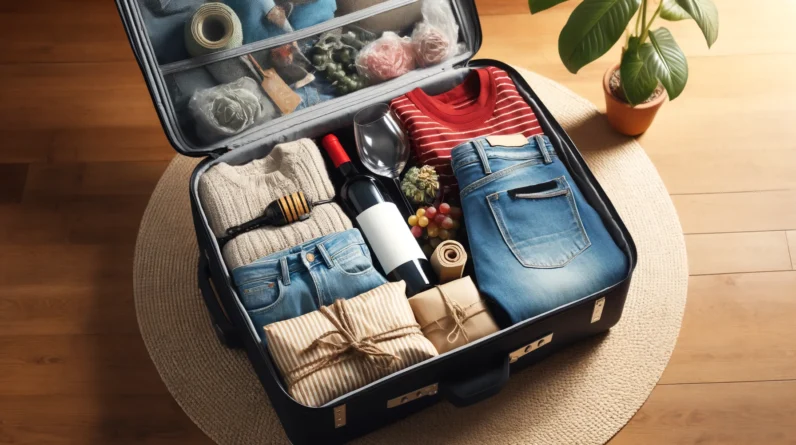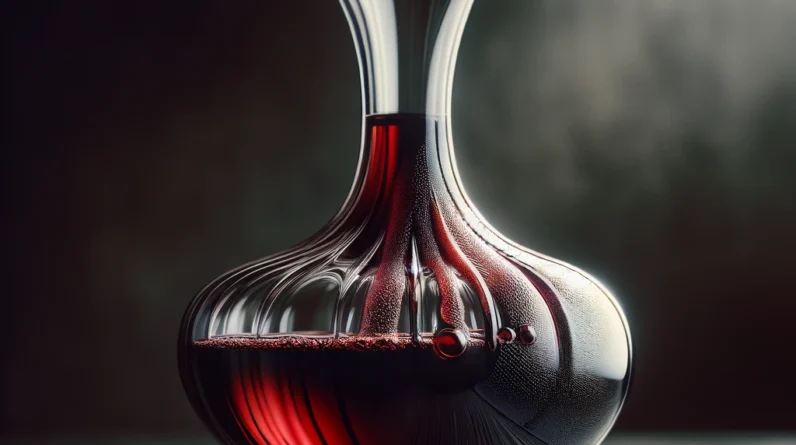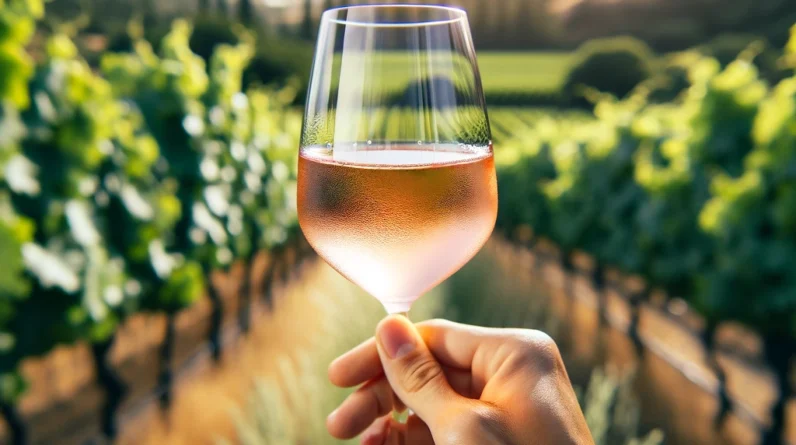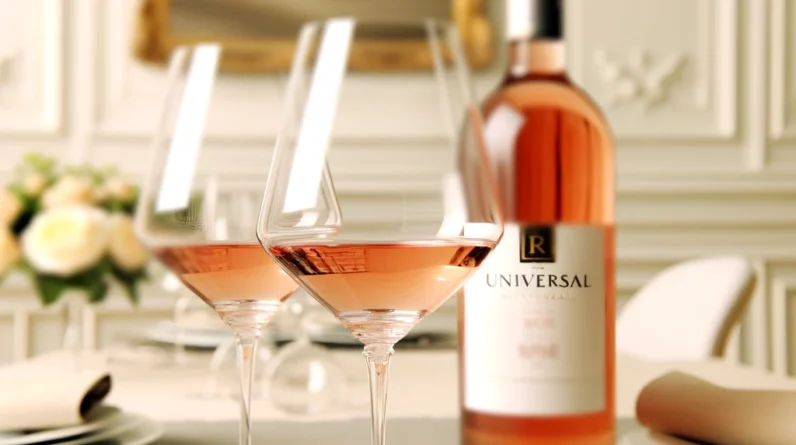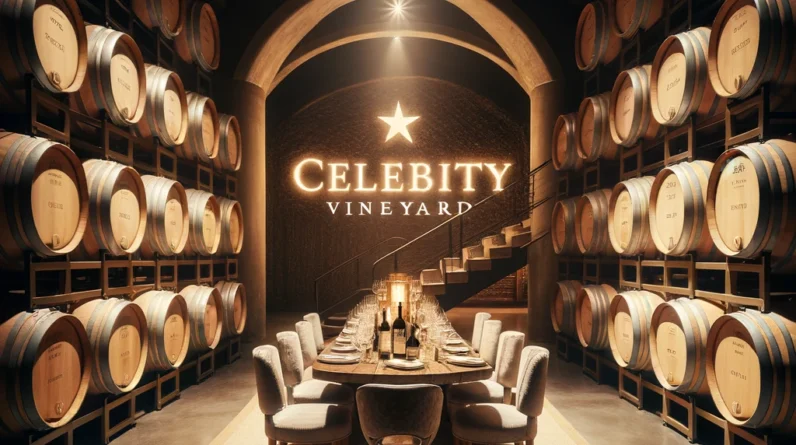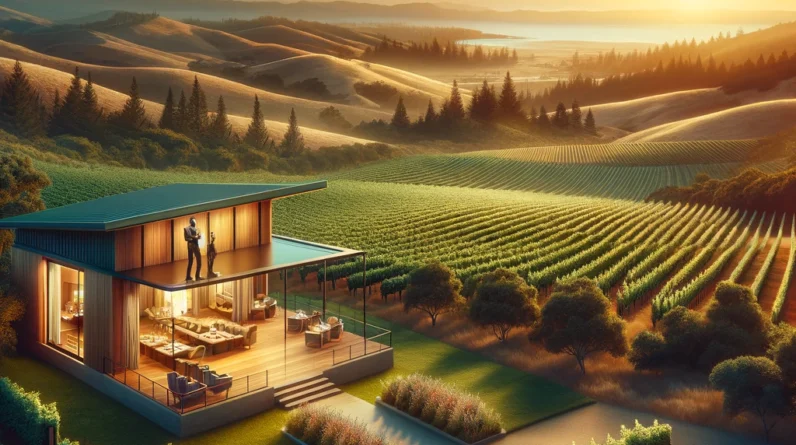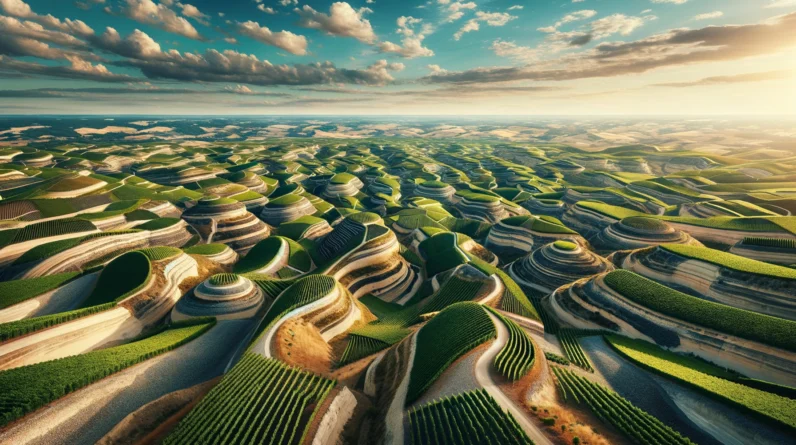
Welcome to the enchanting world of Bordeaux, a region synonymous with fine wine and rich history.
Nestled in the heart of southwest France, Bordeaux is not just a location, but a journey through time-honored winemaking traditions.
Its rolling hills, diverse soils, and favorable climate make it a paradise for wine lovers.
In this article, we’ll explore the essence of Bordeaux – from its unique terroir and grape varieties to its prestigious vineyards and châteaux.
Join us as we delve into what makes Bordeaux a legendary name in the wine world.

Bordeaux’s Geography and Climate
Location
Situated in southwest France, Bordeaux is a gem nestled along the Atlantic coast.
This region is famous for its picturesque landscapes, where sprawling vineyards stretch as far as the eye can see.
Its proximity to the ocean gifts it with a mild, maritime climate, ideal for grape growing.
This climate contributes to the unique quality of Bordeaux wines, making them some of the most sought-after in the world.
The area is rich in history, with a wine-making tradition that dates back to the Roman times.
Bordeaux is not just a location; it’s a cultural experience, blending the art of winemaking with stunning natural beauty and a deep heritage.
Climate
A temperate maritime climate dominates the Bordeaux region, characterized by its mild winters and warm summers.
This climate, influenced by the nearby Atlantic Ocean, brings moderate temperatures and ample rainfall.
Such conditions are perfect for grapevines, as they thrive in this stable and gentle weather.
The region’s distinct seasons – a damp, cool winter followed by a warm, sunny summer – provide the ideal environment for a range of grape varieties.
This consistent climate ensures that each year, the grapes develop the right balance of sugars and acids, essential for producing high-quality wines.
In Bordeaux, the weather plays a key role, helping create wines that are renowned for their flavor, complexity, and depth.
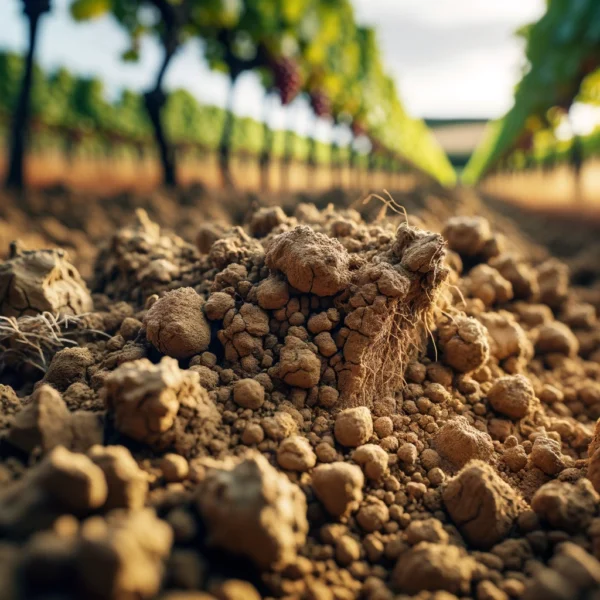
Bordeaux’s Soil and Terroir
Soil Types
The Bordeaux region is blessed with a variety of soil types, each contributing uniquely to the character of its wines.
Predominantly, the soils are composed of gravel, limestone, and clay.
Gravel soils, particularly found near the Gironde estuary, heat up quickly and retain warmth.
This helps in ripening the grapes, leading to rich, full-bodied wines often with deep fruit flavors.
Limestone, prevalent in areas like Saint-Émilion, is known for its ability to retain moisture.
It nurtures the vines during dry periods, resulting in wines that are typically aromatic and have a fine structure.
Clay, common in Pomerol, retains water and keeps the vines hydrated.
Wines from clay soils often have a robust and plush character.
This diversity in soil types across Bordeaux allows a wide range of grape varieties to flourish, each expressing its unique flavor profile influenced by the land where it’s grown.
Terroir Impact
Bordeaux’s terroir, the special blend of its soil, climate, and topography, plays a vital role in defining its wines.
The soil types, from gravel to limestone to clay, provide a unique foundation where different grape varieties can express distinct qualities.
The region’s climate, marked by mild winters and warm summers, ensures a consistent growing season, crucial for the grapes’ development.
Topography also influences the wines – from hillside vineyards that receive more sunlight to riverbank locations benefiting from reflective heat.
These elements together create a unique environment for each vineyard, impacting everything from the grapes’ sugar and acid levels to their tannin structure.
As a result, Bordeaux wines are known for their exceptional variety and complexity, each bottle a reflection of its unique terroir.

Grapes and Appellations
Primary Grapes
In Bordeaux, the choice of grape varieties is a testament to the region’s rich winemaking tradition.
For red wines, Merlot leads the pack.
It’s cherished for its soft, fruity flavors and is often the main component in many Bordeaux blends.
Cabernet Sauvignon follows, known for adding structure and depth with its bold tannins and dark fruit notes.
Cabernet Franc, though less common, plays a crucial role too.
It imparts a subtle, spicy touch and helps in adding complexity to the blends.
When it comes to white wines, Sauvignon Blanc is a star.
It brings a vibrant, crisp acidity to the wine, often with hints of citrus and green fruits. Sémillon, the other white hero, offers a contrast with its richer, fuller body and often honeyed character.
These two white grapes complement each other, with Sauvignon Blanc adding freshness and Sémillon giving weight and complexity.
Together, these grape varieties form the backbone of Bordeaux’s famed wine portfolio, each contributing its unique characteristics to create a diverse and celebrated range of wines.
Appellations
Bordeaux is a mosaic of wine regions, each known as an appellation, and each with its own set of rules and distinctive styles.
Pauillac, for instance, is renowned for powerful and long-lived red wines, primarily made from Cabernet Sauvignon.
These wines are celebrated for their deep flavors and ability to age gracefully.
Saint-Émilion, another esteemed appellation, is famous for its elegant and sophisticated reds.
Here, Merlot takes the lead, often blended with Cabernet Franc, creating wines known for their finesse and complexity.
Margaux, a name that resonates with elegance in the wine world, produces reds that are silky and aromatic.
The wines from Margaux are a blend of different grapes, with Cabernet Sauvignon usually playing a dominant role, contributing to their refined and layered character.
Each of these appellations represents a unique facet of Bordeaux’s winemaking heritage, showcasing the region’s diversity through their distinct wine styles.
Whether it’s the robustness of Pauillac, the elegance of Saint-Émilion, or the aromatic finesse of Margaux, Bordeaux’s appellations contribute to the rich tapestry that makes this region a global wine powerhouse.

Renowned Vineyards and Châteaux
Famous Châteaux
In the illustrious world of Bordeaux wines, certain estates stand out for their exceptional quality and prestige.
Château Margaux, for instance, is a symbol of elegance and refinement.
Its wines, known for their aromatic complexity and silky texture, are highly coveted by collectors and wine enthusiasts alike.
Château Lafite Rothschild is another jewel in Bordeaux’s crown.
Renowned for its rich, opulent wines with great depth and aging potential, it’s a name that resonates with luxury and excellence in the wine world.
Then there’s Château Latour, a name synonymous with power and longevity.
The wines from this estate are celebrated for their robust structure and concentration, often reaching their peak decades after bottling.
These estates, with their storied histories and commitment to quality, produce some of the world’s most sought-after and expensive wines.
Each bottle from Château Margaux, Lafite Rothschild, or Latour is not just a drink but a piece of art, a testament to the heights Bordeaux wines can achieve.
Their wines are more than just beverages; they are treasures that encapsulate the essence of Bordeaux’s winemaking mastery.
Vineyard Highlights
The vineyards of Bordeaux are a testament to precision and care in winemaking.
Each vine is managed with meticulous attention, ensuring optimal growth and grape quality.
This involves careful pruning, training, and canopy management to provide the right balance of sunlight and air circulation.
These practices help in preventing diseases and promoting the healthy development of the grapes.
When it comes to harvesting, timing is everything.
The vineyards employ skilled workers who carefully select the right moment to pick the grapes, ensuring they are at the perfect stage of ripeness.
This is crucial for achieving the desired balance of sugars, acids, and flavors in the wine.
Hand-picking is common in many of Bordeaux’s top estates, allowing for the selection of the best grapes.
This labor-intensive process ensures that only the highest quality fruit makes it into the wine, contributing significantly to the final product’s excellence.
These detailed vineyard practices, from growth to harvest, play a crucial role in maintaining the high standards of Bordeaux wines.
The result is a range of wines that are not only rich in flavor but also consistent in quality, year after year.
This dedication to vine management and harvesting techniques is one of the key reasons Bordeaux wines are celebrated worldwide.
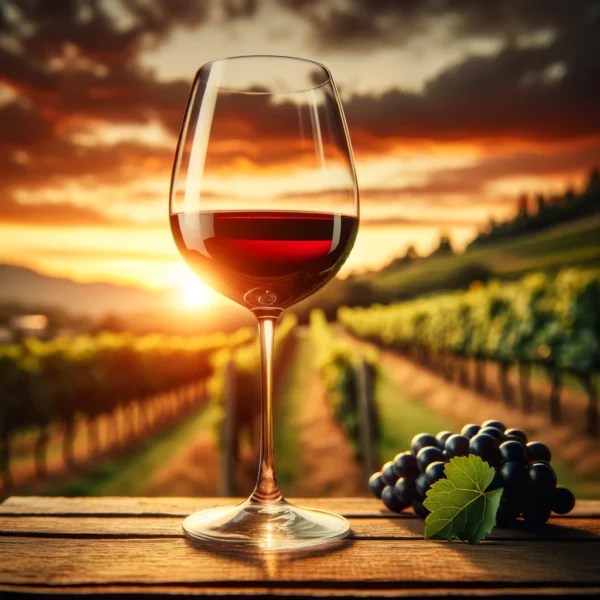
Winemaking Tradition and Uniqueness
Winemaking Techniques
Bordeaux’s winemaking is steeped in tradition, with techniques passed down through generations.
One of the key aspects of this tradition is the use of oak barrels for aging the wines.
This practice imparts unique characteristics to the wine, like subtle hints of vanilla and spice, which enhance its complexity and depth.
Oak aging is not just about flavor.
It also plays a crucial role in the wine’s development.
The interaction between the wine and the oak allows for a slow, controlled intake of oxygen, which softens the wine’s tannins and improves its texture.
This process can take months or even years, depending on the wine style desired.
The choice of oak, whether French or American, and the level of toasting of the barrels, further influences the final flavor profile.
This careful selection and aging process contribute to the longevity of Bordeaux wines.
They develop gracefully over time, evolving into more nuanced and elegant versions of themselves.
In Bordeaux, winemaking is not just a craft; it’s an art form.
The traditional methods, especially oak aging, are central to this art, creating wines that are not just drinks but expressions of history, culture, and terroir.
Blend Mastery
Bordeaux’s fame in the wine world is largely due to its mastery of blending different grape varieties.
This skillful mix of grapes, like Merlot, Cabernet Sauvignon, and Cabernet Franc for reds, or Sauvignon Blanc and Sémillon for whites, is what sets Bordeaux wines apart.
Each grape variety brings its unique qualities to the blend.
Merlot adds softness and fruitiness, Cabernet Sauvignon contributes structure and tannins, and Cabernet Franc offers a touch of spice and finesse.
In white Bordeaux wines, Sauvignon Blanc provides crisp acidity and fresh flavors, while Sémillon adds body and richness.
The art of blending these varieties is a delicate balance, aiming to create a harmonious and complex wine where no single grape variety overshadows the others.
This blending process is a hallmark of Bordeaux winemaking.
It requires knowledge, experience, and a deep understanding of how each variety behaves in different soils and climates.
The result is a range of wines that are balanced, complex, and capable of aging gracefully.
This expertise in blending is one of the reasons Bordeaux remains a benchmark for fine wines globally.
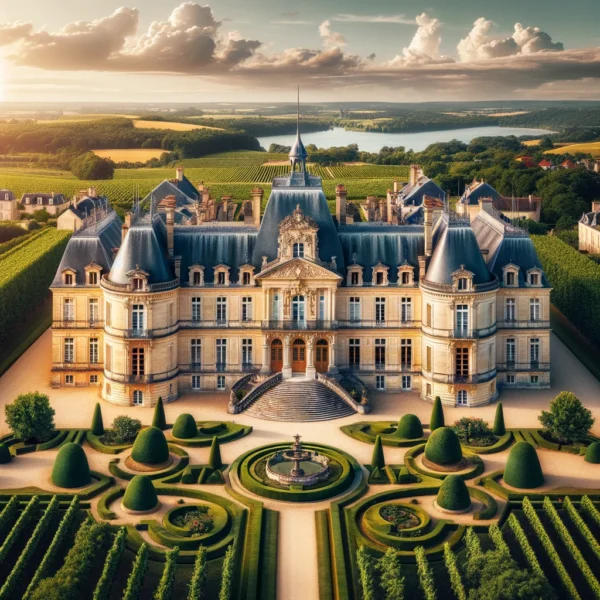
Bordeaux’s Fame and Influence
Global Influence
Bordeaux wines set the standard for excellence in the wine industry.
They are renowned for their quality, consistently delivering wines that are rich in flavor, balance, and complexity.
This reputation has made Bordeaux a model for winemakers around the world.
Wineries in various regions strive to emulate Bordeaux’s style, from the meticulous vineyard management to the art of blending different grape varieties.
The influence of Bordeaux is evident in the use of similar grape types, like Cabernet Sauvignon and Merlot, and in adopting techniques like oak barrel aging.
The impact of Bordeaux extends beyond the production methods.
It also sets trends in the wine market, influencing consumer preferences and expectations.
Bordeaux’s commitment to quality and its global recognition have inspired a pursuit of excellence in winemaking that transcends borders.
In essence, Bordeaux is not just a region producing wines; it’s a benchmark of quality, a source of inspiration, and a leader in the world of viticulture.
Fame
Bordeaux is celebrated for its diverse range of wines, each with its own distinct character.
The region is most famous for its red blends, which are a harmonious mix of different grape varieties like Merlot, Cabernet Sauvignon, and Cabernet Franc.
These blends are known for their depth, complexity, and ability to age gracefully.
In addition to reds, Bordeaux also excels in producing sophisticated white wines.
These whites, often blends of Sauvignon Blanc and Sémillon, are prized for their crisp acidity, fresh flavors, and aromatic complexity.
But Bordeaux’s wine repertoire doesn’t end there.
The region is also home to some of the world’s most prestigious sweet wines, particularly those from Sauternes.
Made from grapes affected by noble rot, these wines are rich, luscious, and have a unique balance of sweetness and acidity.
They are renowned for their intense flavors of honey, apricot, and nuts, and can age for decades.
From robust reds and elegant whites to luxurious sweet wines, Bordeaux offers a wide range of styles that cater to every palate, making it a revered name in the world of wine.

As our journey through Bordeaux comes to an end, it’s clear why this region stands tall in the wine universe.
With its ideal blend of geographical blessings, skilled winemaking, and a legacy that dates back centuries, Bordeaux is more than just a wine region – it’s a symbol of excellence and tradition.
Whether it’s the balanced reds, the aromatic whites, or the luxurious sweet wines, Bordeaux offers something for every palate.
Its influence on the global wine scene is undeniable, making it not just a place on the map, but a standard bearer for quality and sophistication in the world of wines.
FAQs:
Q1: What is special about Bordeaux’s location?
A1: Bordeaux is located in southwest France, along the Atlantic coast.
This prime location provides a unique maritime climate and diverse soil types, ideal for viticulture.
Q2: Why is Bordeaux’s climate good for wine-growing?
A2: Bordeaux has a temperate maritime climate with mild winters and warm summers.
This stable and moderate weather is perfect for growing various grape varieties, contributing to the quality and distinctiveness of Bordeaux wines.
Q3: What are the main soil types in Bordeaux?
A3: The main soil types in Bordeaux are gravel, limestone, and clay.
Each soil type contributes differently to the wine, affecting flavor, structure, and aging potential.
Q4: What does ‘terroir’ mean in the context of Bordeaux?
A4: In Bordeaux, ‘terroir’ refers to the unique combination of soil, climate, and topography that influences the taste and quality of the wine.
It is a key factor in Bordeaux’s winemaking tradition.
Q5: What grape varieties are most common in Bordeaux?
A5: For red wines, Merlot, Cabernet Sauvignon, and Cabernet Franc are most common.
For white wines, Sauvignon Blanc and Sémillon are predominant.
Q6: What are some notable appellations in Bordeaux?
A6: Notable appellations in Bordeaux include Pauillac, Saint-Émilion, and Margaux, each known for its unique wine style and characteristics.
Q7: Can you name some renowned Bordeaux estates?
A7: Renowned Bordeaux estates include Château Margaux, Château Lafite Rothschild, and Château Latour, famous for producing some of the most sought-after and expensive wines in the world.
Q8: What makes Bordeaux vineyard practices unique?
A8: Bordeaux vineyards are known for their meticulous vine management and harvesting techniques, which are essential for the high quality of their wines.
Q9: How does Bordeaux’s winemaking tradition stand out?
A9: Bordeaux is known for traditional winemaking methods, such as oak aging, which adds complexity and longevity to the wines.
Q10: What types of wines is Bordeaux famous for?
A10: Bordeaux is renowned for its red blends, sophisticated white wines, and prestigious sweet wines like those from Sauternes.
Q11: How has Bordeaux influenced global winemaking?
A11: Bordeaux wines are benchmarks for quality worldwide, influencing winemaking styles and standards across the globe.
Q12: Are Bordeaux wines suitable for aging?
A12: Many Bordeaux wines, especially the red blends, are known for their aging potential.
The combination of grape varieties, winemaking techniques, and terroir contribute to their longevity.
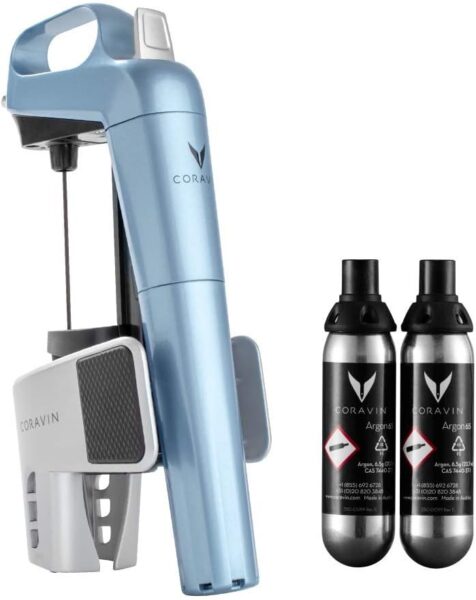
Experience Wine Like Never Before with Coravin!
🍷 Introducing the Coravin Model Limited Edition Wine Preservation System in Steel Blue 🍷
🌟 Savor Every Drop: Why settle for just one bottle? With Coravin, enjoy any wine, any time, without ever pulling the cork. Your wine collection, unlocked with unparalleled freedom.
💎 Elegant Design, Superior Quality: Crafted in stunning Steel Blue and made with durable stainless steel, this isn’t just a wine tool; it’s a centerpiece that speaks to your sophisticated taste.
🚀 State-of-the-Art Technology: Featuring a Teflon coated wine needle, pour your wine smoothly and effortlessly, preserving every cork and every flavor.
🌬️ Ultimate Preservation: Each Coravin capsule uses ultra-pure argon gas to protect your wine from oxidation. Your last glass will be just as perfect as your first, even years later.
🎉 Perfect for Every Occasion: Whether you’re hosting a party or enjoying a quiet evening, Coravin ensures your favorite wine is always on the menu.
💡 Easy and Convenient: Celebrated for its ease of use and light weight, make every pour a joyous experience.
💸 A Wise Investment: Praised for its value for money, Coravin is not just a luxury; it’s an essential for every wine lover.
🌐 Ready for the World: Designed for US outlets but adaptable globally, your Coravin experience knows no bounds.
👉 Get Yours Today! Elevate your wine experience with Coravin. 🍇✨


